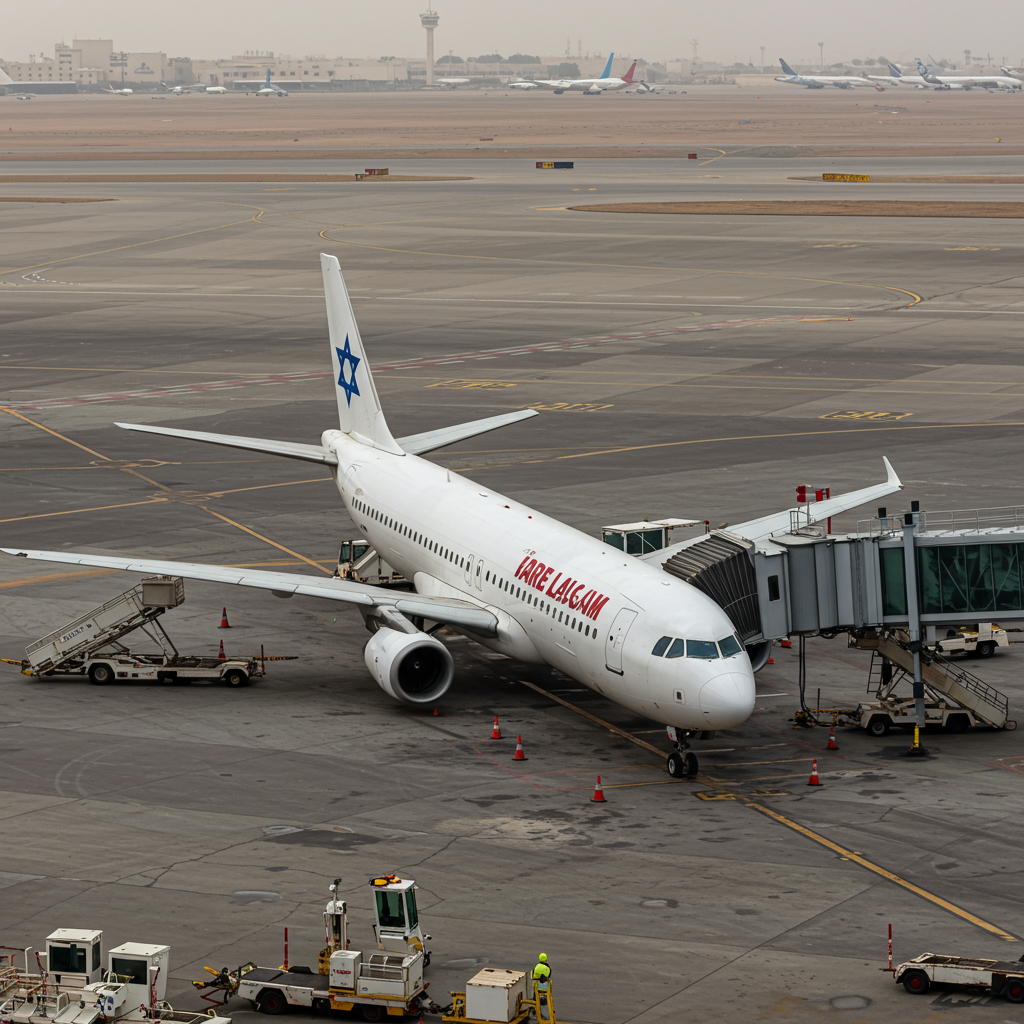The escalating conflict between Israel and Iran has slammed the brakes on air travel across the Middle East, forcing widespread airport closures, diverting planes, and leaving tens of thousands of travelers stranded amid fears of a broader regional war. What began as a series of targeted strikes has spiraled into a direct, state-on-state exchange of fire, with devastating consequences far beyond the battlefield.
Conflict Escalates: Direct Strikes and Civilian Impact
Over recent days, the confrontation between the two bitter enemies has reached unprecedented levels. Israel launched major attacks targeting Iranian military leaders, nuclear scientists, critical infrastructure, and nuclear sites near cities like Tehran and Qom. Iran retaliated with massive barrages of drones and missiles aimed directly at Israel, marking a “chilling shift” in its posture from proxy warfare to overt confrontation. Analysis indicates Iran’s strikes, including using high-precision weapons like the Haj Qasem ballistic missile, were designed to inflict casualties and send a clear political message. The human cost is mounting, with casualties reported in both Iran and Israel, including civilians killed in missile strikes on populated areas in Israel.
Adding to the tension, the International Atomic Energy Agency (IAEA) confirmed that Israeli aerial attacks have damaged the underground section of Iran’s main enrichment facility at Natanz. This marks the first time the agency has reported direct impacts on the subterranean parts of the crucial nuclear site, though Iran maintains its nuclear program is for peaceful purposes.
Air Travel Chaos Grips the Region
This intense exchange of fire has directly led to the paralysis of Middle Eastern airspace. Most countries in the region have been compelled to close their skies or severely restrict air traffic. Dozens of airports have either halted operations entirely or drastically reduced flights, catching travelers off guard and preventing many from returning home or fleeing dangerous areas.
Israel’s main international gateway, Ben Gurion Airport near Tel Aviv, remains closed for both departures and arrivals “until further notice.” This shutdown alone has reportedly left over 50,000 Israeli travelers stuck abroad. In response, Israeli airlines like El Al, Arkia, and Israir have been forced to divert their aircraft, with dozens of planes now parked at Cyprus’s main airport in Larnaca. Cyprus Foreign Minister Constantinos Kombos confirmed that 32 Israel-bound flights were diverted to the island since the strikes began.
Iran has also suspended flights at its key international airport, Khomeini International Airport, near Tehran. Israel reportedly bombed Mehrabad Airport in Tehran, a facility used by Iran’s air force and for domestic commercial flights.
The disruption extends throughout neighboring nations. Iraq’s airports have all closed due to their proximity to the conflict zone and reported use of Iraqi airspace by both sides. Chaos reigns at airports in Lebanon and Jordan, where despite airspace remaining partially open, flights face numerous delays and cancellations, and authorities are closing airports overnight during peak attack times. Syria’s airports, recently undergoing renovation, have also been affected.
Aviation safety expert John Cox described the situation as a “massive domino effect,” predicting huge financial costs due to displaced passengers, crews, and aircraft that are “not where they are supposed to be.”
Stranded Lives and Overland Escapes
For those caught in the middle, the reality of the air travel shutdown is one of fear and uncertainty. Aimal Hussein, a 55-year-old Afghan businessman, found himself trapped in Iran after Israeli strikes landed near his location. With Iranian airspace shut down and taxis refusing to take him near the border, he described being stuck, unable to leave.
In Tel Aviv, Mahala Finkleman was grounded after her Air Canada flight was canceled. She shelters in her hotel’s underground bunker during overnight attacks, describing the fear of hearing explosions and shaking while underground.
Thousands of foreign students in Iran, like Indian medical student Arsalan Ahmed in Tehran, are also stranded. Confined to their hostels by fear, they watch news reports horrified by attacks and listen to “deafening explosions,” with no clear evacuation plan yet in sight from their home governments, though some internal relocation assistance has been provided by universities.
Even escaping by land is perilous. Iraqi college student Yahia al-Suraifi, studying in Tabriz, Iran (an area reportedly hit by strikes), pooled money with dozens of other students to pay taxis for a 200-mile overnight journey to the Iraqi border. They traveled with drones and airstrikes visible in the night sky, a terrifying experience described by al-Suraifi as like “fireworks.” Upon reaching northern Iraq, a further 440 miles remained to his hometown in the south.
The fear is palpable, with many recalling past conflicts. As Aimal Hussein lamented from Iran, being trapped in this dangerous situation brought back bitter memories of war in Afghanistan, making this the second time he’d been caught in such a difficult circumstance.
The widespread airport closures and travel disruptions serve as a stark, tangible consequence of the dangerously escalating Israel-Iran conflict, leaving lives on hold and underscoring the regional instability fueled by the direct military confrontation.




